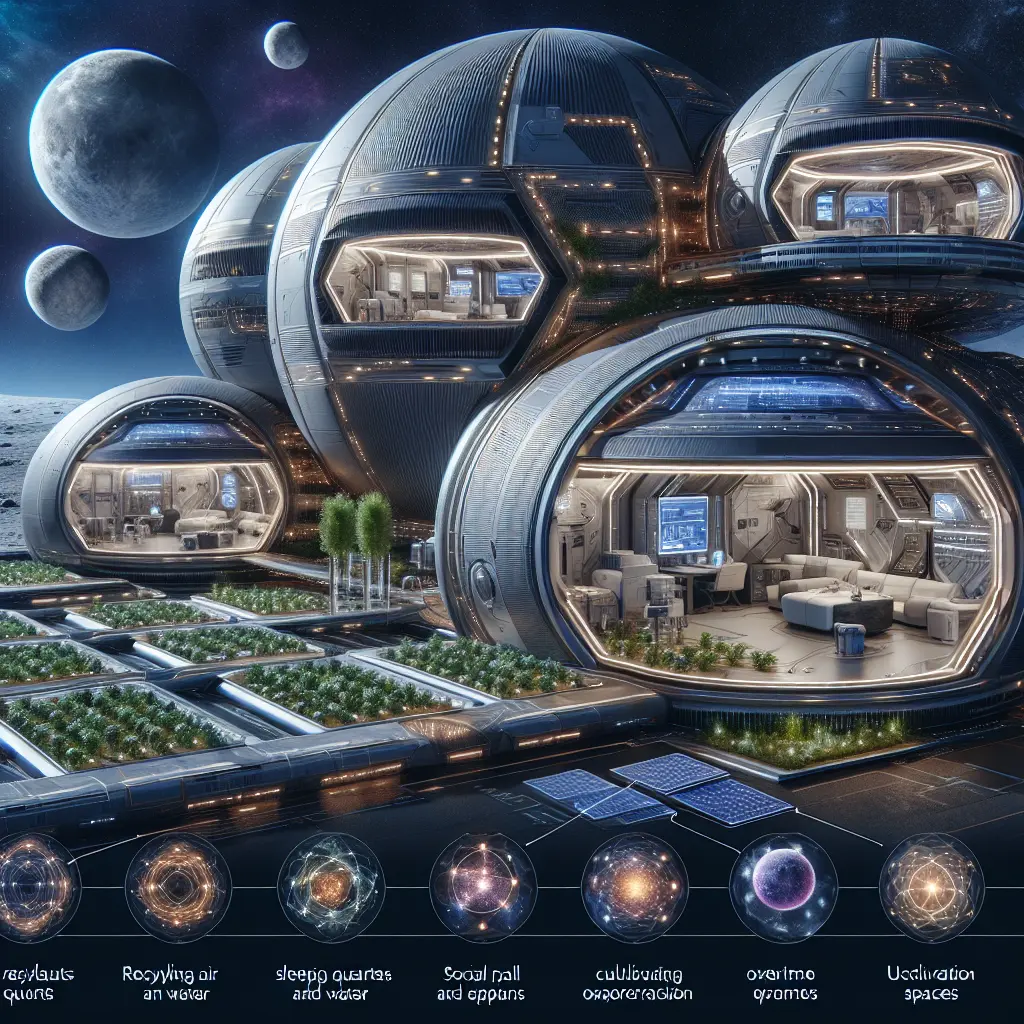As humanity inches closer to realizing the dream of interplanetary living, SpaceX stands at the forefront with its revolutionary innovations in space habitat design. Spearheaded by the visionary Elon Musk, SpaceX has been pioneering advancements that promise to reshape our understanding of sustainable living in space. From the concept of a SpaceX space station to the ambitious plans for a SpaceX Mars habitat, the company's efforts are painting a picture of futuristic space habitats that seem straight out of science fiction.
SpaceX's habitat technology is not just about creating livable environments but also about pushing the boundaries of space architecture. The company's commitment to developing advanced space habitats highlights its dedication to ensuring human spaceflight doesn't just survive but thrives in extraterrestrial environments. This focus on SpaceX design innovations is vital for the future of space habitats, as it explores solutions for long-term living beyond Earth.
The notion of a SpaceX space colony is no longer confined to theoretical discussions but is becoming an increasingly tangible reality, fueled by innovative space habitat technology and a clear vision for SpaceX colonization plans. As we delve deeper into SpaceX's sustainable living in space, it's essential to examine the opinions on SpaceX habitats and their potential impact on our collective future.
With a world keenly observing these developments, it's crucial to explore the implications and opportunities these advancements present. The journey into the heart of SpaceX's human spaceflight and interplanetary ambitions beckons, inviting us to explore the frontier of space living innovations.
SpaceX has consistently been a trailblazer in the realm of space exploration and its innovations in space habitat design continue to captivate both the scientific community and the general public. With the company's ambitious vision led by Elon Musk, SpaceX is not only focusing on launching rockets but also on redefining what sustainable living in space could look like. This section delves into the company's groundbreaking advancements in space habitat technology and their implications for the future of interplanetary living.
SpaceX Habitat Design: A New Frontier
SpaceX's efforts in space habitat design are paving the way for advanced space habitats that go beyond mere survival to thriving in extraterrestrial environments. The idea of a SpaceX space station, for example, integrates cutting-edge space architecture with practical solutions for long-term human presence in space. The design principles that SpaceX employs are informed by extensive research and development, ensuring habitats that are not only safe but also sustainable.
Recent updates highlight SpaceX's collaboration with NASA and other international space agencies to develop habitats that can support human life on Mars. The NASA-SpaceX partnership emphasizes the use of innovative materials and construction techniques that can withstand the harsh conditions of space, demonstrating the company’s commitment to pioneering new methods in space habitat design.
Modular Living Spaces: One of the core elements of SpaceX's innovations in space habitats is the development of modular living spaces. These units are designed to be flexible and scalable, allowing them to be adapted for different missions and environments. Modular designs also facilitate easier transportation and assembly, critical for missions to Mars or even beyond.
Sustainability Practices: SpaceX is at the forefront of integrating sustainability into its space habitat technology. This includes closed-loop life support systems that recycle air and water, minimizing resource consumption and waste production. The focus on sustainable living in space is crucial for long-term missions where resupply from Earth would be limited or non-existent.
The Vision for a SpaceX Mars Habitat
The concept of a SpaceX Mars habitat has moved from speculative discussions to tangible plans. Recent reports indicate that prototypes are being tested for durability and functionality in environments simulating Martian conditions. These habitats will feature smart technologies that automate environmental controls, optimize energy usage, and enhance overall efficiency.
SpaceX’s vision for Mars colonization involves creating a self-sustaining colony capable of supporting human life independently from Earth. The Mars habitat design prioritizes redundancy and resilience, key components for surviving Mars' unpredictable weather patterns and potential hazards.
The future of space habitats is closely tied to the advancements made by companies like SpaceX. As we look towards a future where interplanetary living becomes a norm rather than an exception, innovations such as those from SpaceX will play a pivotal role.
Future Implications: The implications of these advancements are profound. Not only do they prepare humanity for potential colonization of other planets, but they also inspire innovations in terrestrial architecture and sustainability practices. The technologies developed for space habitats often find applications back on Earth, offering solutions for climate challenges and resource management.
Community Engagement: Opinions on SpaceX habitats vary, with enthusiasts applauding the ambitious goals while critics caution about the feasibility and ethical implications of space colonization. Engaging with these diverse perspectives is essential for a balanced understanding of SpaceX's impact on future space exploration.
Space Living Innovations: Bridging Science Fiction and Reality
In many ways, SpaceX's advancements in space living innovations bring us closer to a future that once seemed purely speculative. The company's commitment to pushing the boundaries of what is possible in space architecture opens up new possibilities for human expansion beyond Earth.
To further explore these developments, consider diving into detailed analyses from reputable sources like Space.com, which frequently covers updates on SpaceX's projects and their broader implications. Additionally, insights from experts on platforms like Scientific American provide valuable context on how these innovations fit into the larger picture of human spaceflight and exploration.
By integrating advanced technologies with a visionary approach to design, SpaceX is not only revolutionizing how we think about space habitats but also setting the stage for humanity's next great adventure—interplanetary living. As we continue to monitor these advancements, one can't help but wonder: how soon will we witness a thriving SpaceX space colony among the stars?
In conclusion, SpaceX stands at the forefront of transforming space habitation from concept to reality. Their pioneering efforts in space habitat design are setting new benchmarks for sustainability and safety in extraterrestrial environments. Key innovations include:
- Modular Living Spaces: Flexible and scalable designs that support diverse missions.
- Sustainability Practices: Closed-loop systems for efficient resource use and waste management.
- Radiation Protection: Advanced shielding to ensure astronaut safety.
SpaceX's collaboration with NASA and international agencies exemplifies their commitment to creating viable habitats on Mars, with prototypes already undergoing rigorous testing. Their focus on redundancy and resilience underscores the ambition for a self-sustaining colony that operates independently of Earth.
The broader implications of these advancements are significant, influencing not just space exploration but also terrestrial architecture and sustainability practices. As we contemplate the future of interplanetary living, SpaceX’s innovations inspire both awe and debate, highlighting the transformative potential of technology in bridging science fiction and reality.
As we look to the stars, we invite you to share your thoughts on these groundbreaking developments. How do you envision our future in space? Join the conversation and share your insights in the comments below.
Keep reaching for the stars
Explore more at Space.com and Scientific American for deeper insights into these exciting advancements.






Leave a Comment